#architectural digest mexico
Explore tagged Tumblr posts
Photo

Front Yard - Transitional Landscape This front yard stone landscaping is an example of a medium-sized transitional partial sun landscaping.
0 notes
Text
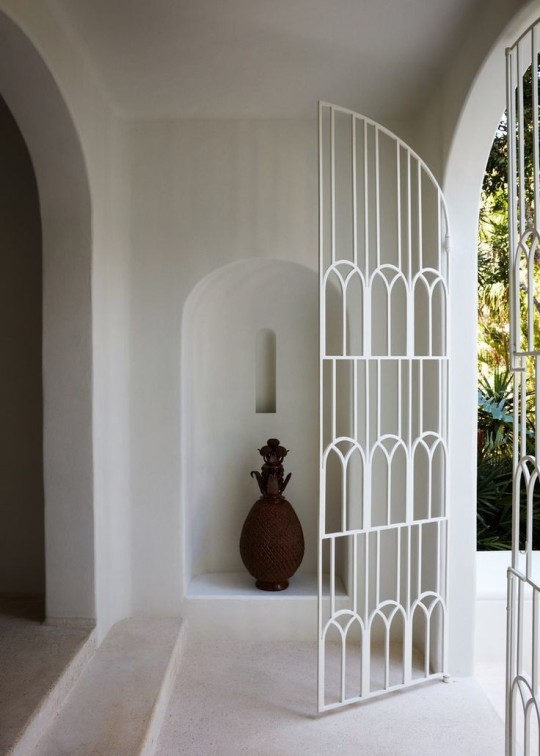
Hotel Esencia | architecturaldigest
#architectural digest#esencia mansion#hotel esencia#mexico#photographer: stephen kent johnson#design by giancarlo valle#article by alia akkam#styled by colin king#entry#entryway#gates#contrast#simple#minimal#white#tulum#playa del carmen
24 notes
·
View notes
Text
For Betsy and all the women watching the news who know she's more than just his wife.
Feb. 27, 2025, 2:11 PM EST By Kimmy Yam
Betsy Arakawa, Gene Hackman’s wife — a businesswoman who was a steadfast companion of the screen legend and had musical talents of her own — died with him Wednesday.
Arakawa, 65, was found dead with Hackman and the couple’s dog in their New Mexico home, the Santa Fe County Sheriff’s Office said. A search warrant says the deaths are “suspicious enough in nature to require a thorough search and investigation.”

Actor Gene Hackman with his wife, Betsy Arakawa, in New York in the last few years.Leslie Hackman
“It is with great sadness that we announce the passing of our father, Gene Hackman and his wife, Betsy,” Hackman’s family said in the statement. “He was loved and admired by millions around the world for his brilliant acting career, but to us he was always just Dad and Grandpa.”Arakawa, a former classical pianist, had been with the “French Connection” actor for more than four decades. She met the actor while working part time at a fitness center in California, according to The New York Times Magazine. Together, the pair, who married in 1991, enjoyed watching DVDs that Arakawa would rent, particularly “simple stories that some of the little low-budget films manage to produce,” Hackman told Empire in 2020.
But long before meeting the actor, Arakawa, a Hawaii native, was an accomplished young pianist. While attending Kahala Elementary School, Arakawa, then 11 years old, performed for 9,000 children at the Honolulu International Center Concert Hall, according to a 1971 Honolulu Star-Bulletin newspaper article.
Arakawa moved to Los Angeles after high school, where she attended the University of Southern California. During her time there, she juggled going to classes, working as a production assistant on popular classic television game show “Card Sharks,” and cheerleading for the now-defunct professional soccer team, the Los Angeles Aztecs, according to a 1981 issue of the Honolulu Star-Advertiser.
She continued performing on occasion, once giving a piano concert at the Altenheim Geriatric Center in Chicago, which was featured in Hackman’s 1989 action thriller film “The Package,” according to a Chicago Tribune article from that year.

Actor Gene Hackman with his wife, Betsy Arakawa, at the Golden Globe Awards in Los Angeles in 2003.Mark J. Terrill / AP file
Arakawa eventually ended up in New Mexico with the actor and, according to Architectural Digest, had a big hand in the couple’s home renovations, filling their household with items from their travels.
“We bought a few things in Santa Fe,” Hackman told the outlet. “Other things came from auctions in New York, an antiques shop in Germany that Betsy and I found, and from Los Angeles.”
There, she also co-owned a home decor shop that often featured work from local artists, according to a 2005 article in the Santa Fe New Mexican.
Hackman addressed rumors that he had left his first wife, the late Faye Maltese, with whom he shared three children, for Arakawa, clarifying in a 2021 interview with the South Florida Sun Sentinel that that wasn’t the case.
“I did not leave my real-life wife for a younger woman. We just drifted apart,” Hackman said. “We lost sight of each other. When you work in this business, marriage takes a great deal of work and love.”
#Rest In Peace Betsy Arakawa#Rest In Peace Gene Hackman#Betsy Arakawa was too accomplished to just be ..... and his wife#Pianist#Business woman
7 notes
·
View notes
Text

Gene Hackman’s House in Santa Fe
To Gene Hackman, who has just completed filming Class Action and Postcards from the Edge, moving constantly from one film location to another is comparable to his many moves from house to house.

His latest residence, near Santa Fe, was designed by local architects Stephen Samuelson and Harry Daple.
Gessoed wood slats and frescoed walls in the Gene Hackman’s House in Santa Fe
By Joan Chatfield-Taylor, with Photography by Mary E. Nichols, Architectural Digest, February 1990

Walls were removed and ceilings raised to make one central great hall. Hackman and Samuelson picked out the massive tree trunks from a local mill, and, says Samuelson, “they became the most important element of the entire residence.” With the collaboration of Santa Fe interior designers Ken Figueredo and Glynn Gomez, Hackman and his companion, Betsy Arakawa, arranged the furnishings, some acquired on the couple's travels.

A rustic dining area.

In all the houses he has redone, Hackman always wanted a butcher block in the kitchen, and this was going to be the house that had it,” says Samuelson. “At a critical moment, we were all standing around discussing the fate of the countertops, and Gene finally stated loudly, ‘Look, I said I wanted a butcher block.’ End of discussion.”“I knew exactly what I wanted,” says Hackman. “I wanted to have southwestern colors, which I love. I wanted a personal home with the music and art that I love.”
Two grand pianos were moved around in different areas until they ended up in an alcove overlooking the entry, a location no one had anticipated. “It just happened,” says Samuelson.
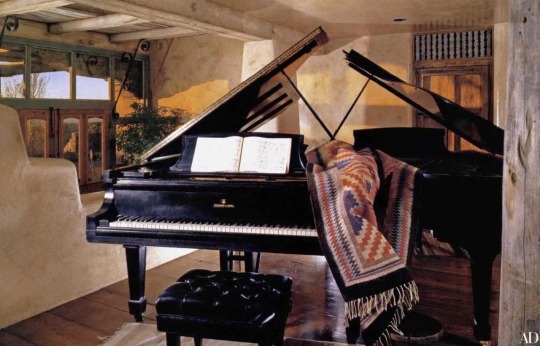
A carved Italianate column became the catalyst for the design of the master suite. Carved stone pieces, discovered by Hackman, were incorporated into the mantel. Figueredo introduced the wicker chairs and animal figures; antique Moroccan urns and large pots from Oaxaca, Mexico, were used as accents.

French doors lead from the master suite to a wide veranda that wraps around the room. The pueblo style is balanced by a northern New Mexican portal with a tin roof. The view extends over horse pastures toward the mountains around Los Alamos and Sandia Peak near Albuquerque.
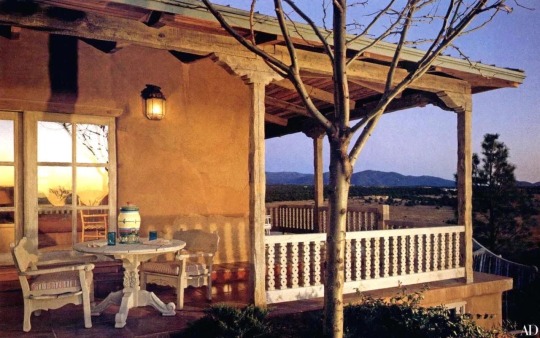
A southwestern-style porte cochere, supported by giant tree trunks and shaded by wood slats, stands at the main entrance to the house. The stucco color used on the exterior was created specifically so that the house would blend into the ridge and the surrounding twelve acres of piñon-covered hillsides.

6 notes
·
View notes
Text
Day 428 Art meditation, Paper wall sculpture #2, “Tree Ring” Heart Art
Dear You,
Filling up the house with paper wall sculptures! This is the 2nd ‘Tree Ring’ paper wall, with a pattern of 3 blocks, to see if it inspires something new ...

It’s so meditative. It’s tangible. It fills my heart up with joy. I am healing myself one moment at a time.
My sister recently told me that she doesn’t define “trauma” like I do, and it was the first time ever we even approached the topic …
She’s right, compared to most people, my version of trauma was nothing.
And I know I would never have bothered to go deep into healing work, but the fact that I have been struggling on so many levels the last ten years, it left me no choice but to go Inward. One of the reasons this journey is taking so long is that my ego-space has done everything to try to get out of it, every distraction possible. But I always end up here, at my Heart.
I am so grateful that G gave me the book by Dorothy Corkille Briggs, “Celebrate Your Self: Enhancing Your Own Self-Esteem”. The single most important book in my (and G’s) life, because it is crystal clear on what it means to find your True Self. There is a reason it was never a best seller - it’s the hardest path.
If my life had gone the way I thought I wanted it to go, I would never have tapped into all this inside me.
Every time I make a paper sculpture, I am learning how to trust myself more.
Every time I make a new Heart Art Brand Bundle, I trust myself more.
The art brings up a stillness for me, and there is my voice, and time to write.
(Which is one of the reasons I leave it open to purchase, because combining art and writing is powerful … )



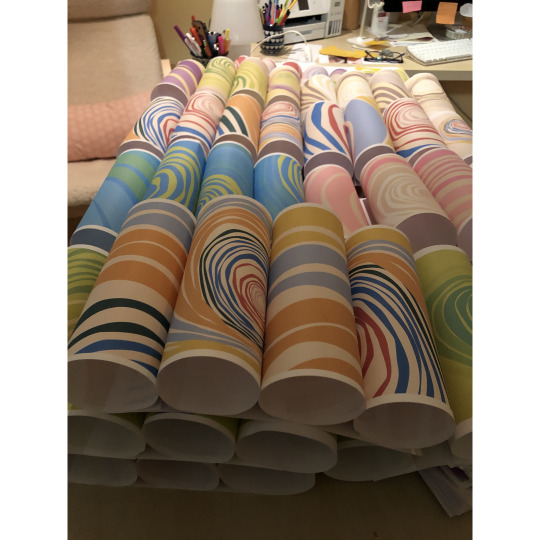
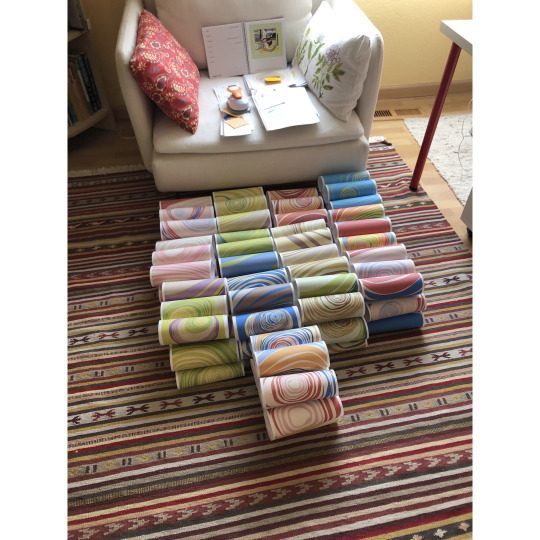
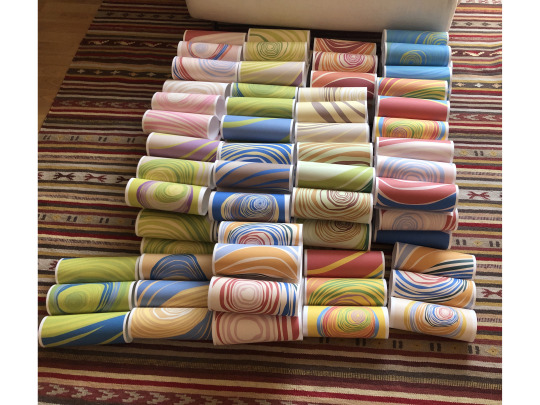



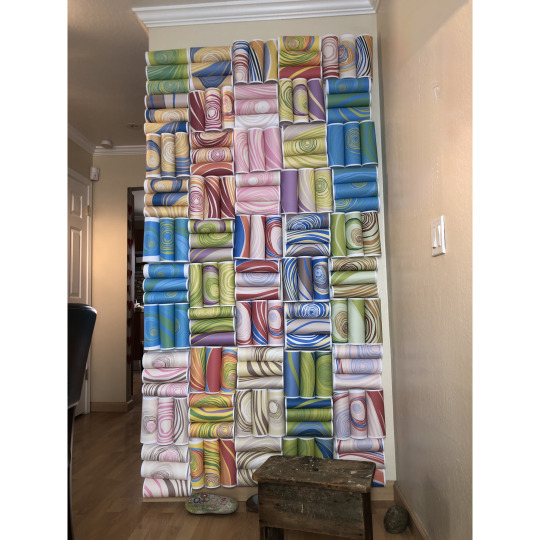

Art 🖼️ on walls …
I’ve always loved to look inside the houses of artists - Henri Matisse filled his house with art, especially in his last years when he was confined to a wheelchair and he and assistant (who was probably also one of his art models) hung the huge paper cut out art pieces all over his house, which later became some of most famous art ever. It’s on my to-do list to write and design a love letter into this part of Henri Matisse’s life and art … I have not forgotten.
Georgia O’Keefe’s gorgeous adobe Studio House in Abiquiu, New Mexico was very simple and every room filled with artful, mindful objects. Dreamy…
Recently I saw a 2016 Architectural Digest article of Marc Chagall’s heavenly house, and I’m not surprised that a lot of his own oil paintings hung on the walls …
Ansel Adams and non-artist wife lived in Big Sur, CA, and I remember seeing the AD issue of their house - the living room was a gorgeous dark blue, the windows all had views of fir trees … And there are all kinds of interesting art.
So many stories with each art piece, and what a haven, each home.
If I could travel for one year just visiting artists' homes, I would! Maybe for now I’ll just re-subscribe to Architectural Digest. 😍
I am grateful for these art walls now, together with G’s oil paintings, making our home as beautiful as I can with materials I do have access to.
I have to remind myself to be present now, that I’m already living the dream, in many ways. And what’s more, art and my creative bubble is where I focus now even during the times I’m not actually doing my creative work. That skill alone took 10 years to build up.
So grateful. 🙏🙏🙏
Lots of love,
Anne ◎


◎
Ⓒ 2024 Anne Hunsicker | All Lines Are Beautiful. All rights reserved.
#artisthomes#houses#PaperMurals#gratidude#treering#graphicdesign#graphicdesigner#alllinesarebeautiful#artsoulfully#artdrop#design#heartliving#heartartbundles#heartart#art#love#artexpandshearts#light#bethelight#authentic#expandlove#soulfulliving#bethechange#heart#heartspace#color @archdigest @architecanddesign#brand#artmeditation#art soulfully#lifeisart
2 notes
·
View notes
Text
Slow Roll
IV.II. MMXXV
For a long time now, I've been running. Having to think of the next move without every really considering the whole picture. I don't think that this way of going about my life is helpful.
From the current world events, with all the talk about tariffs and AI, it is easy to get fearful and nihilistic.

It seems that the best thing to do is to focus on fun, creating, and learning. It may not make me anything, it doesn't have to make or do anything, but if it brings me even a little bit of joy, that is enough.

Some cool pieces for your consideration:
Slow Productivity | Cal Newport
Art is slow.
You've consumed enough. It's time to create
Inside a Breathtaking Cave Home Overlooking Mexico City | Unique Spaces | Architectural Digest
See you around ✌️
0 notes
Text
Avance parcial 2
Alebrijes

Oaxaca

En Oaxaca, los alebrijes se hacen de madera de copal y se inspiran en la idea de los nahuales, los cuales, son vistos desde dos perspectivas: un ser mitológico o sobrenatural con la capacidad de transformarse en animal, así como un elemento de la naturaleza relacionado con la brujería; o la conexión espiritual entre otros.
Esta gran artesanía es muy famosa por todo México Aunque fueron originados en Ciudad de México, los artesanos de Oaxaca imitaron las figuras, pero sustituyendo la técnica de cartonería por la de madera tallada tradicional de la región oaxaqueña. Conservaron los brillantes colores y la tradición y elaboración de alebrijes esta técnica de artesanía se origino en los pueblos de San Antonio Arrazola y San Martín Tilcajete y están agradecidos por eso.
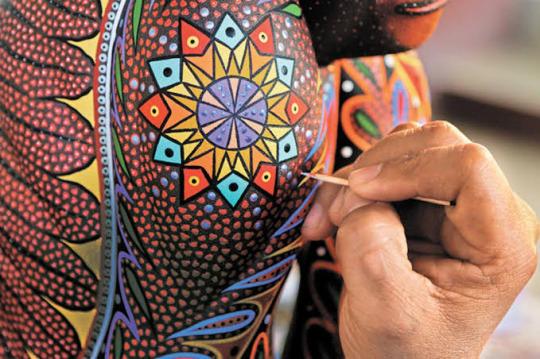
El creador de los alebrijes es Pedro Linares López, cartonero de profesión y originario de la capital del país. Linares relata que la creación de estos animales nació de sueños causados por una enfermedad que padeció y que al recuperarse decidió replicar las criaturas que encontró en sus sueños. La tradición iniciada por Pedro Linares lo llevo a recibir en 1990 el Premio Nacional de Ciencias y Artes y aún después de su muerte su familia continúa engendrando alebrijes de colores.
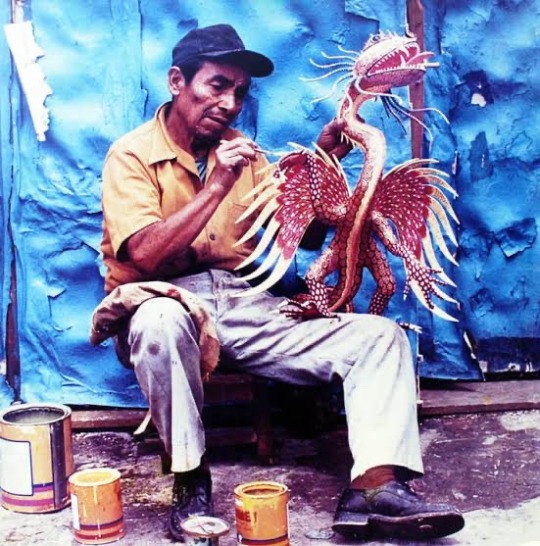
Esta gran artesanía que muchos la conocen se preguntan
¿Para qué se utiliza?
Al ser parte del arte tradicional mexicano, se cree que regalar un alebrije ayuda a "espantar" a los malos espíritus de los hogares, especialmente aquellos alebrijes con un aspecto más "monstruoso". Asimismo, estos se consideran como un símbolo de buena suerte.
Sin embargo, también existe la creencia, de acuerdo con la mitología zapoteca, en la que cada ser humano nace acompañado de un animal que lo guiará durante su vida, denominado “nahual” o “alebrije”.
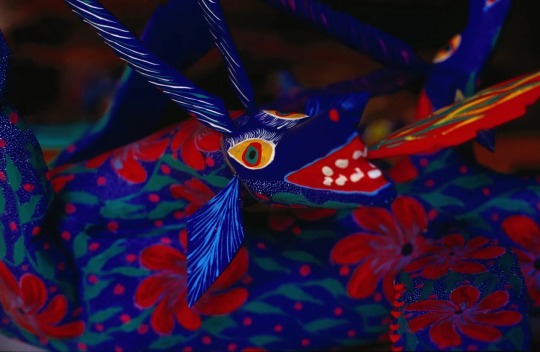
Una de las características de los alebrijes es su colorido, por lo que cada uno de los tonos tiene un significado distinto. Por ejemplo, el verde se asocia con la naturaleza y la empatía, mientras que el rosa es un color sensible que simboliza el amor.
El naranja se utiliza para liberar las emociones negativas y el amarillo se relaciona con la expresión de nuestros sentimientos, la alegría y el lujo. El azul refleja la tranquilidad, mientras que el café significa la conexión con la tierra y los animales.
Y entre otros significados.

SUS MATERIALES SON:
Ya que los alebrijes son de la Ciudad de México con cartoneria pero los oaxaqueños sustituyeron la técnica esto hace tan especial los alebrijes de Oaxaca.
1.Madera de copal o Copalito
2. Machete filosos
3.Juego de cuchillos
4.Lijas
5.Pintura
6.Pincel
7.Sellador
¿Cual es su realizaciones?
Al tener la madera harás un dibujo de como vas hacer el alebrije después de ello con el machete cortaras y con los cuchillos darás mejor la forma de ojos etc al acabar se ligara todas las superficies y después se pintaran y se sellara y listo.
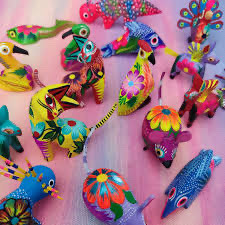
Bibliografías
Ochoa, A. (2020, 28 octubre). Alebrijes, las figuras fantásticas más coloridas del arte popular mexicano. Architectural Digest. https://www.admagazine.com/gran-diseno/alebrijes-las-figuras-fantasticas-mas-coloridas-del-arte-popular-mexicano-20201028-7622-articulos#:~:text=Pedro%20Linares%20L%C3%B3pez%20un%20cartonero,gallo%20con%20cuernos%20de%20toro De Educación Pública, S. (s. f.). Pedro Linares López. gob.mx. https://www.gob.mx/sep/acciones-y-programas/pedro-linares-lopez#:~:text=Aprovechando%20su%20habilidad%20de%20cartonero,vida%20a%20los%20%E2%80%9CAlebrijes%E2%80%9D
Parte de ingles
Alebriges
Oaxaca:
In Oaxaca, the alebrijes are made of copal wood and are inspired by the idea of the Nahuales, which are seen from two perspectives: a mythological or supernatural being with the ability to transform into an animal, as well as an element of nature related to witchcraft; or the spiritual connection among others.
This great handicraft is very famous throughout Mexico Although they originated in Mexico City, the artisans of Oaxaca imitated the figures, but replacing the cardboard technique with the traditional carved wood of the Oaxaca region. They preserved the bright colors and the tradition and elaboration of alebrijes this craft technique originated in the towns of San Antonio Arrazola and San Martín Tilcajete and they are grateful for that.
The creator of the alebrijes is Pedro Linares López, a cardboard maker by profession and originally from the country's capital. Linares reports that the creation of these animals was born from dreams caused by a disease he suffered and that when he recovered he decided to replicate the creatures he found in his dreams. The tradition initiated by Pedro Linares led him to receive the National Prize for Sciences and Arts in 1990 and even after his death his family continues to engender colored alebrijes.
This great handicraft that many know wonder what is it used for?
As part of traditional Mexican art, it is believed that giving away an alebrije helps to "scare away" the evil spirits of homes, especially those alebrijes with a more "monstrous" appearance. Likewise, these are considered as a symbol of good luck.
However, there is also the belief, according to Zapotec mythology, that every human being is born accompanied by an animal that will guide him during his life, called "nahual" or "alebrije".
One of the characteristics of the alebrijes is their color, so each of the tones has a different meaning. For example, green is associated with nature and empathy, while pink is a sensitive color that symbolizes love.
Orange is used to release negative emotions and yellow is related to the expression of our feelings, joy and luxury. Blue reflects tranquility, while coffee means the connection with the earth and animals.
And among other meanings.
ITS MATERIALS ARE:
Since the alebrijes are from Mexico City with cartoneria but the Oaxacans replaced the technique this makes the alebrijes of Oaxaca so special.
1. Copal wood or Copalito
2. Wired machete
3. Set of knives
4. Lijas
5. Painting
6. Paintbrush
7. Sealant
What are your achievements?
When you have the wood you will make a drawing of how you are going to make the alebrije after that with the machete you will cut and with the knives you will give better the shape of the eyes etc. When you finish all the surfaces will be tied and then they will be painted and sealed and ready.
0 notes
Text

David Duplanti house, Mexico, for Architectural Digest
0 notes
Text
Chapter 4: The First Load Arrives
“It’s the weather, Bob. They have to wait until it’s perfect. Right now it’s snowing in El Paso,” I told Bifocal Bob on the payphone call to New York.
“Snowing in El Paso?” he asked, “Is that even possible? I thought it was in the desert.”
“It’s the high altitude desert, Bob, and the crossers don’t want their movements tracked in the snow.”
“That’s ridiculous. Just get me the fucking load. Otherwise, I’m spending my money on what Neanderthal Ned brings me.”
“Neanderthal Ned” was a reference to one of my border smuggling competitors. He notably lived in a luxurious, retrofitted cave in the mountains overlooking Tucson and was able to amass substantial amounts of Mexican cannabis from independents operating along the Arizona border. Architectural Digest had written a favorable article about his Taliesin West inspired residence which was equipped with advanced automatic features like automated sky lights and floating stairways well ahead of its time. Ned, operating outside of cartel jurisdiction, retrofitted motor homes whose interiors had been altered to fit his shipments which averaged over a ton.
As well-known as Ned and his operation was, it was his girlfriend, Molly, who captured the most attention. Molly and I moved in the same circles. After she and Ned parted company, Molly showed up as a companion to Billy Mercedes, one of my main San Francisco distributors who lived in Marin County. After that Molly married a certain well-known television doctor, who wrote an anguished book, “Taming Molly” about his attempts to get Molly to conform to suburban life while married to medicine.
Ned was reliable, I explained, but this was on another level. We were sending the best genetics to Mexico. Commercial logistics were being arranged. The cartel had ensured a steady supply.
“Bob, you’re about to be on the other end of a pipeline,” I explained.
“Snowing in El Paso? That has got to be some bullshit. Get here as soon as you can.” Patience was not a virtue with Bob.
Waiting is the hardest part of the game. Tension continues to build as the wait goes on. The tension is composed of one or two parts anticipation and several parts fear. Fear that your warehouse might stand out, that crossers would be captured and the authorities might start working their way up the supply chain. Every day I spent at the Las Cruces, New Mexico Marriot was another day that law enforcement might start to wonder what I was doing there, comfortably ensconced in one of their suites in an area not known for tourism. Staying in one of the Marriot suites, playing the tourist and seeing the wonders of El Paso and Juarez? Hardly.
What to do with all that nervous energy? You couldn’t leave El Paso because the shipment was imminent. It could be seized at any point and then you were out whatever investment you had made and you might attract Federal attention. You couldn’t sit in your room or you’d go crazy with boredom. Every day, to avoid the anxiety, I would make the culinary circuit with Brian: breakfast at Lucy’s or Mi Pueblito with the great chili con queso, always followed by scrambled eggs with jalapenos or an egg over easy on one of their traditional red sauce enchiladas. Then we’d head over the bridge and spend the afternoon at the Florída in Juarez. The Florída restaurant was widely known to be owned by members of the cartel so we felt comfortable. Whatever the restaurant, Brian made sure that we were always supplied with an endless pitcher of margaritas.
If it was the right time of year, the Florída had cuitlacoche, the gray, stone-shaped fungus that becomes like tar when it is cooked and has an earthy, tangy, mushroom-like flavor with a hint of raw corn. Farmers call the dish el oro negro, or black gold. The Florída was also renowned for all of the classic Mexican dishes: turkey mole with three kinds of chocolate from Oaxaca, cooked for thirty six hours in clay pot, or carnitas tacos made the old fashioned way, carved from a roasting spit.
Later, after margaritas and a couple of joints of Mendocino homegrown, we would reconvene at Juarez’s renowned watering hole, the legendary border saloon, the Kentucky Club. The Kentucky was frequented by Generals Pancho Villa and Alvara Obregón, the first president of Mexico after the revolution. “The Kentucky” had a timeless quality with pictures from the Mexican Revolution of Pancho Villa riding majestically through town on a horse festooned with turquoise and silver bridles, Villa handing out chocolates or silver bullets to children, Villa with what looked like a cannabis blunt and of the U.S. general, Pershing, who led the Villa Expedition to find and punish Pancho Villa for his attack on Fort Bliss. If you stayed at the Kentucky Club long enough you hear all the stories about Villa. He was famous for his consumption of cannabis, celebrated in “La Cucaracha” and it was historical legend that Villa smoked his cannabis at the Kentucky.
Tables at the Kentucky, with the afternoon light casting shadows, reminded me of an elegant bar somewhere in the British Raj as the sun was setting on the Empire. Any table held court on an international assembly of stealthy high-end thieves, secretive smugglers, cartel lieutenants and Federal agents trying to avoid detection. The Kentucky was styled with thoughtful attention to detail from another era like the soft green-tiled trough that circled the bar which allowed their card playing patrons to urinate at will and not leave their cards unattended. Since the bar was constructed before refrigeration, every day at 4 PM, a skinny young kid, who looked as if he should still be in middle school, carried in the blocks of ice used for mixed drinks on his back. He was always accompanied by his boss, a seasoned four foot dwarf, who directed him and collected money for the ice. The dwarf danced back and forth with a nervous tick as he visited each table to offer an earnest “Buenas tardes”. He always stuck out his hand, expecting a tip in recognition of his status.
I formed a special bond with the Kentucky’s oldest bartender, Andrés, when I brought him a New York Times Travel Section article about him and the Kentucky Club. He framed it and to this day it’s still hanging from a favored location on the wall behind the bar. With great ceremony, he offered to give me his secret margarita recipe which I will reveal now for the first time: one part Hornitos Reposado tequila, one part squeezed lime, one part the Mexican orange liqueur, “Controy”. Andrés was insistent that I not try to substitute the French version of this same liqueur, “Cointreau”. It was finished with lots of hand-chiseled ice.
We blithely disregarded the DEA agents who would occasionally occupy a shadowy corner table, but later, when Brian’s partner Charlie was indicted, we found out that an entire Justice Department task force had been listening and waiting for just the right time. Brian and Charley had arranged for a planeload of Colombian cannabis, flown by some Southwest Airline pilots, that was abandoned before it was fully unloaded in the Palm Springs desert. Years later, the DEA confronted Charlie right in the Kentucky, laid out their evidence among the shots of tequila, and secured Charlie’s cooperation.
Still half-lit from the Kentucky, we would hop back into Leilani’s Cadillac and get in line to go back across the border. It was time for a nap to sleep off the tequila, to clean up and get ready for the evening.
Brian’s answer to the waiting doldrums was to honor a Texas tradition and visit one of El Paso’s multitude of topless bars. El Paso, being part of the South, with the Fort Bliss army base and the University of Texas, El Paso was a prime location for the industry. On my second day in town, Brian took me to lunch in a small downtown café called the “King’s X”. Just as I was biting into my turkey club, the clock struck one and the staff, with matching uniforms, came out to engineer a spectacular transformation. A small stage emerged from a hidden panel and four gorgeous college girls from UTEP walked out in sequined bikinis. It wasn’t long before I stopped eating lunch to watch the performance. Maybe I had led a sheltered academic life previously, but I was from California and had never seen anything like this: one minute I was eating lunch and the next there were college girls dancing topless with breasts unexpectedly inches from my face. Brian noticed my discomfort and immediately called over one of the UTEP girls and insisted she sit on my lap.
He introduced me as a “professor” and asked her what her major was. “I’m studying law,” she said and asked if I could help her with her homework as Brian slipped her a twenty.
“This is my friend’s first time in El Paso,” Brian explained, “I’d like you to introduce him to the way we do things in the state of Texas.” At that narrow, two-person table, she took some time to show me the affability for which Texas was famous. My wire-rimmed glasses were smashed and bent, but I was infatuated.
Unlike California, topless bars were everywhere. There seem to be an attempt to anchor shopping malls with the classic troika of Texas: a topless bar, a pawn shop, and a church. There were some that catered to those who liked heavier girls, to those that liked thin girls, to natural and artificially constructed girls and to every possible ethnicity. Some of them tried to overwhelm you with scale and sheer numbers of dancers and then there were others that were all nude. The latter required one to bring one’s own alcohol, because of an obscure Texas law that recognized the potential for social chaos if alcohol and complete exposure were sold in the same location at the same time. Another timely framed rule on the wall of every bar in Texas, “It is unlawful to discharge a firearm in an establishment where alcohol is sold.” Only in Texas would the constabulary feel the need to spell out the obvious. I gradually settled on two bars that stood out: the Lamplighter, and Prince Machiavelli’s. The Lamplighter became my favorite and it wasn’t long before all California propriety was gone and I started dating the dancers.
One morning, Brian showed up early at my room at the Marriot. Brian was always well dressed with a starched collared shirt, a selection of one of his Patek Phillipe watches and exotically skinned boots. “Del, it looks like we’re out of pocket today so I’ve decided we need to get you out of those tennis shoes.” Several of the cartel lieutenants had mumbled a comment or two regarding the informality of my choice of footwear.
“Man, you can’t wear tennis shoes unless you’re at home,” they told me. ”Why even your president wears boots,” Don Chui’s son, Armando, said, referring to George W. Bush. Over time, a growing consensus and low key concern from Leilani to our Mexican friends had determined that it was a matter of Texas pride, gentlemanly decorum and respect for local customs that demanded that I should immediately be outfitted with appropriate boots.
Brian had shown up with Charlie, his Mexican partner, who was dark-complected, short and heavyset, with a mustache reminiscent of Emiliano Zapata. Charlie always wore shorts and sandals which drew attention to his ample abdominal girth. He was dating the widow of a West Texas oil tycoon, Deborah, who just idolized the notion of her Charlie as a wild, pot smuggling outlaw. Deborah, the stylish blond Texas cheerleader, with her expensive outfits and jewelry, presented an odd couple when matched with Charlie. “My former husband was in the awl business,” she explained with a full Southern drawl, “But I just love my Charlie”. She loved showing Charlie the outlaw to her El Paso society friends and she made it clear to everyone that Charlie had improbably captured her heart as a virile Latin lover.
We arrived at Brian’s bootmaker who occupied a small shop in the old part of town near the border. The bootmaker was a small older Mexican man whose hands were yellow dyed and worn from years of working with leather and lasts. There was hardly room to sit as the shop was filled in every available space with the exotic skins of endangered species. The bootmaker took my measurements to build a last that would serve as the foundation for many future generations of my boots. Having taken my measurements, the bootmaker, under Brian and Charlie’s direction, began to bring in a selection of skins. Once again, with my California sense of propriety, I began to cringe in alarm as they showed me crocodile (endangered), lizard (endangered) and elephant (obviously endangered). The bootmaker mistook my wide-eyed examination of the elephant skin as an interest in the species, so he brought out an “elephant face” skin. Really? I thought, elephant face? There it was with a bullet hole right in the middle of this poor elephant’s skin face. I settled on ostrich, which I knew to be farmed.
“Del, you’ll need a second pair. You can’t just have one pair of boots,” Charlie explained, Pick one more,”
“Yes, you’ll need more than one pair,” Brian echoed. At this point, everyone was beginning to understand my reservations and laughed.
“Since you’re from California,” Charlie said laughing, “ you’d probably be happy with the alligator. Alligators are farmed. Unlike crocodiles, there’s plenty of them.” I settled on the alligator.
We decided to go out that night to celebrate my boot purchase. I selected the ostrich skin for a night on the town. We settled on the Lamplighter which was always our favorite spot. I called Theresa, my latest flame, and she came to pick me up in her classic 68 Mustang with her name, “Theresa”, written in sparkling sequins on each side of her car. My memory of the evening’s events was hazy, but I did remember a chorus line forming at one point with all the dancers joined together in a Rockette like performance.
I woke up early to the sound of a knock on my door. It was from Brian. He was up and ready.
“The crossers came through last night and the first load is in the warehouse, “ he said smiling.
#drug trafficking#cartels#drugmanufacturing#narcos mexico#narcos fan fiction#narcos fanfiction#narcos#mexico#netflix series
0 notes
Photo

Transitional Landscape This front yard stone landscaping is an example of a medium-sized transitional partial sun landscaping.
#design and construction in yucatan#built in stone kitchen#colonial style in mexico#colonial home#architectural digest mexico#mexican house interior#restored colonial home
1 note
·
View note
Text


1 note
·
View note
Text
With great eyes comes high light and flashing sensitivity 👁️🕶️📸🥺
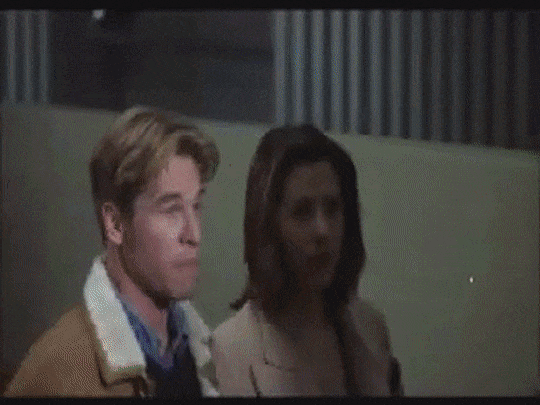

It gets overwhelming sometimes and he gets temporary blindness 😵😭


It evolves a lot of squinting in pics, wearing tinted glasses, even indoors (not to mention they look cool ❄️)
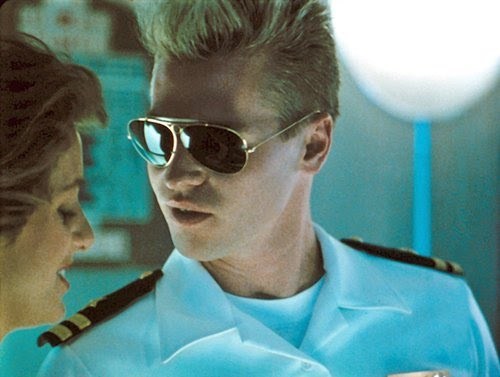



That's also why his house (new Mexico) is mostly lit by soft and yellow lights, scones💡 and candles 🕯️even the chandelier.


Source : the architectural digest
#Val kilmer#top gun#tom iceman kazansky#iceman#Tombstone premiere#doc holliday#Simply Shakespeare#at first sight#virgil adamson#Real genius#Chris knight#The saint 1997#The saint premiere#Simon Templar#the og tinted glasses king#Val's New Mexico house#The architectural digest#My gifs#Val analysis
265 notes
·
View notes
Text

Cacti and bougainvilleas in front of a tower on the Mexican coast, designed by Marco Aldaco.
Photographer: David O Marlow
Architectural Digest, October 2006
#Cacti#nature#flowers#photography#bougainvilleas#mexico#Architectural Digest#magazine#editorial#2000s#architecture
156 notes
·
View notes
Photo









Marbrisa House. Overlooking Acapulco Bay, Mexico 1978. Arch. John Lautner.
#john lautner#brutalism#Architecture#acapulco#mexico#room with a view#1970s#1978#architectural digest
3K notes
·
View notes
Photo



cafe motín
#cafe motin#pink#mexico city#architectural digest mexico#futura#i cant find this on here so here it is#i still cant figure out if its a bunny or a hamster
0 notes
Link
4 notes
·
View notes